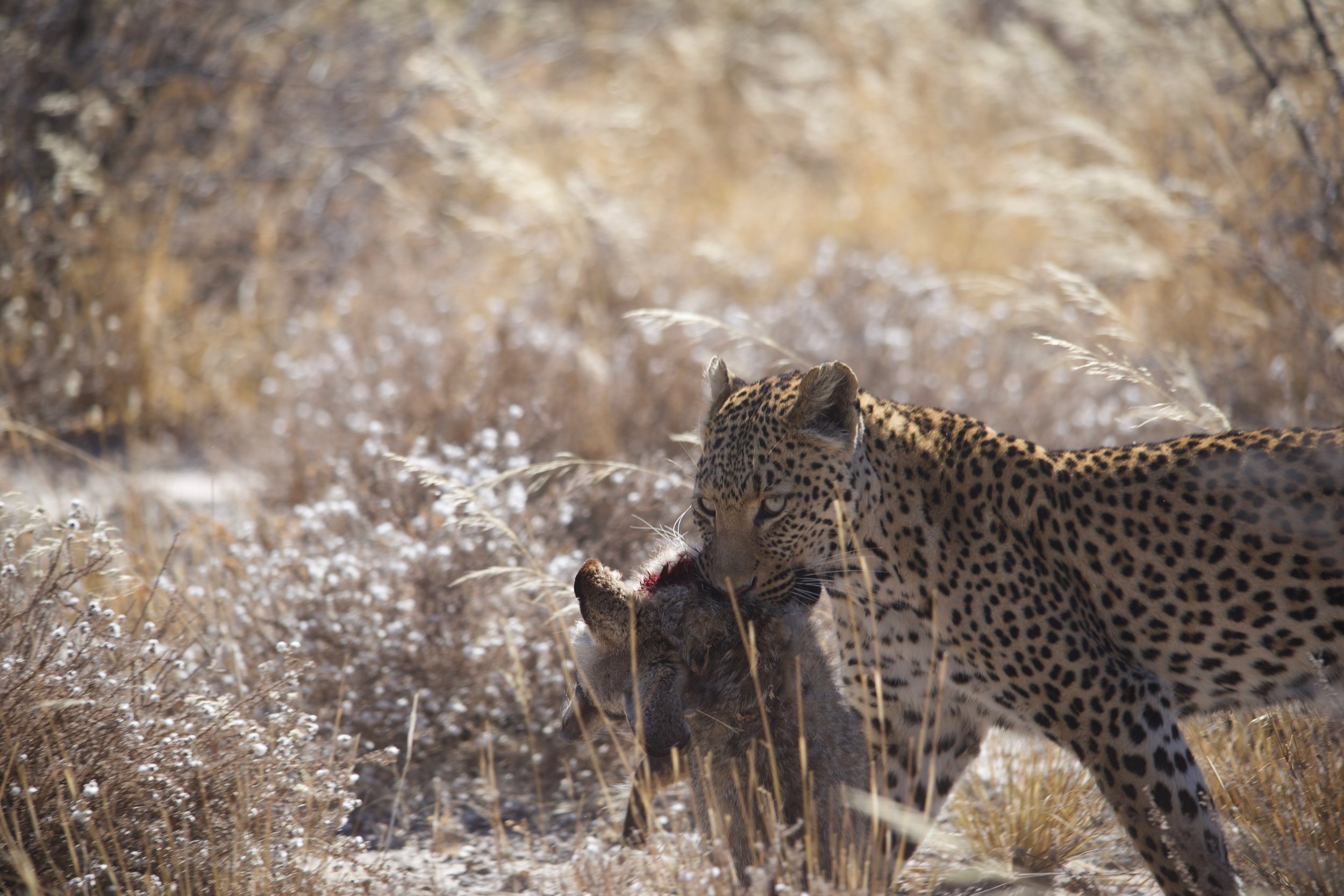Male leopard with Puku and Impala in the background.
The secrecy and stealth of the leopard make it impossible to say with a certainty that the species occurs in any particular region, or even to state that it does not occur. Probably the average city park would comfortably shelter a full-grown pair of leopards - it has done so in several African cities.
Few living large mammals, save man, posses anything approaching the range of a leopard. Quite at home on the great mountain slopes and the equatorial forests as in the arid thorn scrub of the Kalahari desert.
So the cat in the distance, glimmering in the mirage of the midday sun, shouldn’t have surprised us when we realised it was not a lioness or a cheetah, but a leopard! Out in the middle of the dry Deception Pan in the Central Kalahari Game Reserve in the midday sun, stalking prey… In the distance a leopard almost melts into the surroundings. On a recent safari, parked in the shade of a leadwood forest by a water channel, a guest was idly watching a cloud of midges drifting slowly through the dense trees, and only when at close range he detected a pair of eyes, poised among the midges that he realised he was watching the Leopard.
This morning the Kalahari Leopard seemed to melt away into the shade of the smallest of thorn bushes. Here we played the waiting game, knowing that the Leopard was moving into the prey-rich pan system of Deception Valley. Packing away the coffee cups there was a hushed call from the group in the car - “She is on the move”.
Often a leopard will lie up in suitable bush, an overhanging bough or other cover, and literally wait for his prey to come to him. Alternatively, a steady progression along likely areas keeping out of sight and hearing, selecting a prey and picking his line of approach is adopted. This was the case this morning, the Leopard selected a Bat Eared Fox. When the leopard stalks, the animal seems to flow into the ground, and it is common for the movement forward to the rushing point to be barely perceptible and extraordinarily difficult to photograph.
The final rush and actual kill was all over in a flash. The force of the rush was sufficient to drive down the fox, the Leopard anchored itself with the forepaws and the grip with the teeth was maintained on the neck and throat, jaws firmly clamped shut until the Bat Eared Fox died of strangulation, if it had not already been killed by the sheer impact and effect of the fangs upon the neck bones. Those who have killed animals and fishes will know that death is indicated by an overall tremor which was clear to see.
A leopard dragging its kill, a bat eared fox, away to a selected spot to feed.
Leopards will drag their kill to conceal it.
Leopards will us the thickest possible ground cover to conceal their kill from flying scavengers such as vultures, crows and Marabou storks. It was a privilege to witness arguably the most beautiful animal in the wild using all of the Leopard’s skills and attributes to simply continue the process of keeping itself alive.
On Barclay Stenner safaris James and I have been lucky enough to see many leopards over the course of the year, a large proportion of them in the green season.
Leopard cub - Moremi Game Reserve
Beautiful light and cloud displays are characteristic of this quieter season that runs from November through to May in Botswana, and if you are able to follow the large migrations to the summer habitats then you will be richly rewarded. Where the prey go the preadors will follow.
Lioness and cubs in Moremi Game Reserve playing whilst Elephant graze in the background.
Leopard in the rain. Savuti, Chobe National Park.







